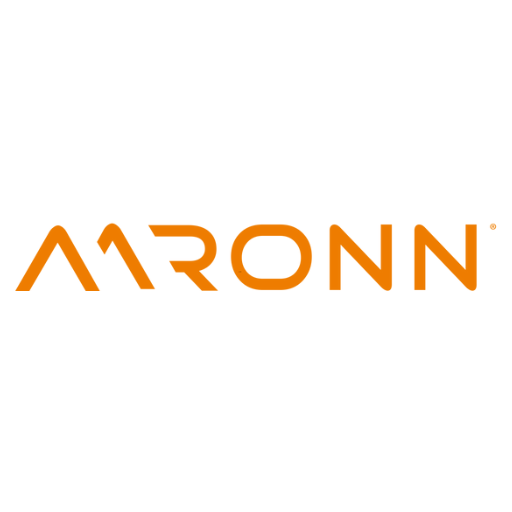Intel launched the 12th generation of its Core processors (codenamed Alderlake) at the end of October 2021. The high-end variants in particular caused quite a stir: With a maximum Turbo Boost of up to 5.2 GHz, 16 cores and 24 threads, the announced desktop processors push into areas in multi-thread performance that offer new possibilities in gaming as well as in creating and editing demanding digital content. Most of the coverage focused on the Intel® Core™ i9-12900K, currently the best gaming processor. That is comprehensible, since the race between AMD and Intel for the most powerful CPU for gaming PCs provides plenty of material for reports, tests and comparisons.
The new approach behind Intel’s 12th Gen core generation
However, it is easy to overlook the fact that the switch to a new generation does not only bring improvements to the top modules, but across the entire product range. And it’ s a big one: The 12th Gen Intel Core family comprises a total of 60 processors with more than 500 partner designs. The underlying, new performance hybrid architecture delivers scalable performance from 9 to 125 watts. This allows every PC segment to be covered, from ultrabooks to desktop PCs and edge applications. According to Intel’s roadmap, the first Extended Lifecycle Series and Industrial Series motherboards with different chipsets will be available in the second quarter of 2022. Further variants are to follow immediately thereafter.
The new approach adopted with the performance hybrid architecture is interesting. The performance hybrid architecture combines a performance core and an efficiency core (P-core and E-core). The performance core provides high single-thread performance and responsiveness for compute-intensive applications. The efficiency core provides multithreaded performance for applications that can run in parallel. It also handles background tasks, which improves multitasking. The performance can be adjusted depending on the respective task.
DDR5 support and GPU architecture Intel Iris Xe
Also common to all 12th Gen Intel CPUs is support for new graphics cards and data storage. Both benefit from higher data throughput with PCIe 5.0 (up to 16 lanes) and higher access speed and bandwidth with DDR5 memory. The new memory generation supported for the first time with Alderlake is currently particularly attractive for applications that require high memory bandwidth. In addition, no more major optimizations are to be expected with DDR4. DDR5, on the other hand, is still at the very beginning: According to the JEDEC specification, the speeds are currently between 4800 and 6400 MT/s and increases of 400 MT/s per year are planned. The maximum speed for DDR4 is 3200 MT/s. In addition, the DDR5 architecture enables DRAM densities of up to 64 Gbit per Single-Die package, which means that a capacity of 128 GBytes is possible per memory block – four times as much as DDR4. Another interesting innovation: At 1.1 volts, the applied voltage is only 0.1 V lower than in DDR4, but the memory module itself now controls the power supply, not the motherboard. This makes the energy management much more efficient.
The Intel Iris Xe GPU architecture also ensures higher speed and more performance. At the same time, it is energy-saving and can also be used for machine learning in addition to image processing.
New possibilities for embedded platforms
Only shortly after the announcement of the 12th Gen Intel Core architecture, the leading manufacturers of boards and modules have also announced their plans related to the new processors. They are making use of the new possibilities in embedded platforms. As expected after the product launch, the main focus is on demanding applications. However, there is also a high demand here, because artificial intelligence for efficient edge applications, fast and reliable image recognition and image analysis or even the evaluation of video data are increasingly part of projects in production environments or IoT scenarios. And compared to the previous generation, the new CPUs enable IoT applications with significantly higher single and multi-thread performance.
Another significant innovation is the support of Time Sensitive Networking (TSN). This means that the CPUs are now also suitable for real-time applications. For clocked end-to-end encryption of communication streams to work with fixed upper time limits, all components involved must be able to measure time. This is particularly essential for control functions, for example in industrial automation.
The fact that these options are in demand is something that Aaronn Electronic experiences on a daily basis in discussions with customers. More and more frequently, the camera is “just another sensor” that provides information for controlling and optimizing the overall system. And the better and faster these data volumes can be evaluated directly on site, the more diverse are the resulting possibilities. When it comes to exploiting these possibilities, Aaronn is always ready to support its customers – even in small projects – with experience, know-how and support in all aspects of individual customization. The focus is always on the customer’s needs, which can be optimally met with hardware from different manufacturers.
Thanks to its close relationships with leading manufacturers, Aaronn is able to propose the best possible approach in each case, independent of the manufacturer – also depending on current availability. In times of massive component shortages, this is an important advantage that the system integrator Aaronn offers its customers.
Boards and modules with 12th-gen CPU at a glance
The following overview summarizes boards and modules with Intel 12th Gen CPUs that are interesting for embedded platforms.
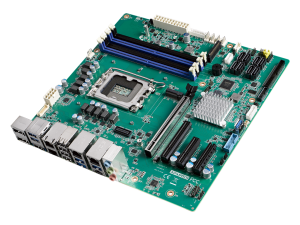
Pic. 1: The Micro-ATX board “AIMB-588” from Advantech supports Intel’s desktop CPUs and offers up to 128 GB DDR5 memory. © Advantech
Advantech announced platforms for the Alder-Lake CPUs in January. Already launched are the AIMB-588 micro-ATX board and the SOM-C350 COM HPC client size C module. The AIMB-588 holds desktop processors, offers a PCIe 5.0 x16 slot and supports up to 128 GBytes of DDR5 memory. The SOM-C350 is also designed for 12th Gen desktop processors, but adds space for dual-channel DDR5-4800 SO-DIMM with up to 128 GBytes and a variety of interfaces, including four USB 3.2, two 2.5 Gigabit Ethernet, and PCIe 5, 4 and 3. Security is provided by the integrated TPM 2.0 (Trusted Platform Module).
In the coming months, Advantech will also release the EPC-B5588, an embedded system with 4 height units, and the 4-inch SBC MIO-4370, each with four Gigabit Ethernet ports for GPU connection for particularly graphics-intensive applications. High performance in a small space is promised by the announced AIMB-288 (a mini-ITX board) and the slim EPC-T4288 compact system. Both are designed for 12th Gen desktop CPUs and will offer GPU connectivity via Mobile PCI Express Module (MXM GPU).
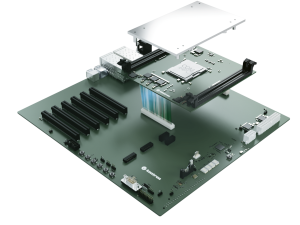
Pic. 2: Kontron’s COM-HPC modules are expected to be in the 160 mm × 120 mm Client Size C form factor and will be launched at the end of the second quarter of 2022. © Kontron
Kontron has already announced that it will update its current Mini-ITX, µATX and ATX motherboards with the new Intel processors. Kontron will also use Intel’s current processor series for its upcoming COM HPC/Client platform (Size C – 160 x 120mm). This is expected by the end of the second quarter of 2022. It will support up to 512 GByte DDR5 via 4x SODIMMs.
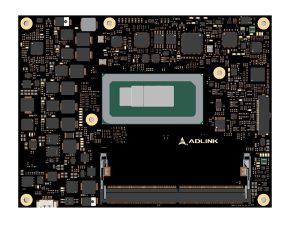
Pic 3: The COM Express Basic module from Adlink Technology is available with the new Core generation and offers 64 GB of DDR5 memory and an NVMe SSD, as well as other features. © Adlink Technology
ADLINK has also already introduced two Computer-on-Modules (COM) based on 12th Gen Core processors with different form factors: a COM HPC/Client module and a COM Express Type-6 module. Similarly, Intel Iris Xe architecture enables display virtualization and the connection of up to four independent 4K displays. Both modules from Adlink can be equipped with up to 64 GBytes of DDR5 memory and an NVMe SSD. They offer 16x PCIe Gen4 and 5x PCIe Gen3, 2.5 Gigabit Ethernet, two SATA ports, and four each of USB 3.x and USB 2.0.
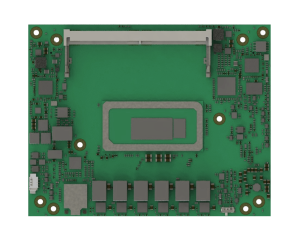
Pic 4: Seco’s COM HPC Size A modules are available under the name “Orion”. © Seco
With the product name “Orion” and the former product name CHPC-D80-CSA, SECO has introduced a COM HPC client module (Size A – 120 x 95 mm). Up to 64 GBytes of DDR5 memory are also possible in two slots here and two external SATA drives can be connected. In addition to the interfaces known from the other boards, two serial interfaces are also available here. Wi-Fi 6 is also supported.
So the choice is already wide – and will become even wider in the coming months. With real-time capabilities, AI support, high computing power and support for Wi-Fi-6, as well as the certainty of being able to connect modern peripherals via powerful interfaces in the long term, the boards and modules with Intel Alderlake open up numerous new possibilities.
YOUR DIRECT CONTACT

Stefanie Fließ
Account Manager
stefanie.fliess(at)aaronn.de
Tel.: +49 89-894577-14
